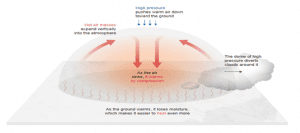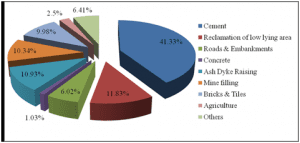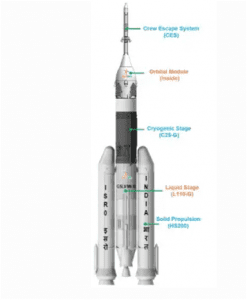1. HEATWAVES
TAG: GS 1: GEOGRAPHY
THE CONTEXT: Recently, the US scientific and regulatory agency the National Oceanic and Atmospheric Administration (NOAA) announced that the year 2023 witnessed Earth’s hottest June since the record-keeping of global temperatures began 174 years ago.
EXPLANATION:
- According to scientists and experts, a number of factors are fueling the soaring temperatures in different parts of the world.
- At present, heat domes and anticyclones are responsible for the occurrence of heat waves in several parts of the world. Although they don’t occur due to climate change, they have become more intense and longer as a result of soaring global temperatures.
- Also, El Nino conditionsare exacerbating the extreme heat around the world. Essentially a weather pattern that refers to an abnormal warming of surface waters in the equatorial Pacific Ocean, El Nino is known to “greatly increase the likelihood of breaking temperature records and triggering more extreme heat in many parts of the world and in the ocean.
- While in the USA and Algeria, heat domes are responsible for unleashing heat waves, Europe has suffered due to the arrival of two consecutive anticyclones that originated in Africa.
Anticyclones:
- An anticyclone, also known as a high-pressure system, is essentially an area of high pressure in which the air goes downwards towards the Earth’s surface. As the air sinks, its molecules get compressed, which increases the pressure, making it warmer. This causes dry and hot weather.
- The winds remain calm and gentle during an anticyclone, and there is almost no formation of clouds because here the air sinks rather than rises.

Heat domes:
- A heat dome occurs when an area of high-pressure stays over a region for days and weeks. It traps warm air, just like a lid on a pot, for an extended period.
- The longer that air remains trapped, the more the sun works to heat the air, producing warmer conditions with every passing day. Heat domes, if they last for a long period, may cause deadly heat waves.

2. BHOOMI SAMMAN AWARD
TAG: GS 2: GOVERNANCE
THE CONTEXT: The President presented the Bhoomi Samman awards to nine state secretaries and 68 district collectors for their achievements in the implementation of the Digital India Land Records Modernization Programme.
EXPLANATION:
- Bhoomi Samman Awards aims to acknowledge and encourage outstanding performance in the implementation of the Digital India Land Records Modernization Programme (DILRMP).
- Digitisation increases transparency, and this mission of digitising land records will have a positive impact on rural development.
- The awards were given to nine state secretaries and 68 district collectors for achieving saturation of the core components of DILRMP.
- The digitisation process of land records and registration will help mitigate the huge pendency of court cases involving land disputes, cutting down the loss to the country’s economy due to projects being stalled over such litigations.
- It is expected to increase the effectiveness and efficiency of various services and benefits of the programmes of central and state departments related to agriculture and farmer welfare, chemical and fertilizer, public distribution system (PDS) etc.
- It is noted that the Department of Land Resources has achieved 94% digitisation targets pan-India and is aiming for 100% by March 31, 2024.
Digital India Land Records Modernization Programme (DILRMP):
- Digital India Land Records Modernization Programme (DILRMP) led to merger of two erstwhile Centrally Sponsored schemes of the Land Reforms (LR) Division
- Computerisation of Land Records (CLR)
- Strengthening of Revenue Administration and Updating of Land Records (SRA&ULR).
- The main aims of DILRMP are to create a system of updated land records, automated and automatic mutation, integration between textual and spatial records, inter-connectivity between revenue and registration
- It aims to replace the present deeds registration and presumptive title system with that of conclusive titling with title guarantee.
- The DILRMP has 3 major components
- Computerization of land record
- Survey/re-survey
- Computerization of Registration.
- Programme implementation: The State Governments/UT Administrations will implement the programme with financial and technical support from the Dept. of Land Resources, Government of India. The district will be taken as the unit of implementation, where all activities under the programme will converge.
- The citizen is expected to benefit from DILRMP in one or more of the following ways;
- Real-time land ownership records will be available to the citizen
- Free accessibility to the records will reduce the interface between the citizen and the Government functionaries, thereby reducing rent-seeking and harassment.
- Public-private partnership (PPP) mode of service delivery will further reduce citizen interface with Govt. machinery, while adding to the convenience
- Abolition of stamp papers and payment of stamp duty and registration fees through banks, etc., will also reduce interface with the Registration machinery
- The single-window service or the web-enabled “anytime-anywhere” access will save the citizen time and effort in obtaining RoRs, etc.
Source:https://www.deccanherald.com/national/president-murmu-presents-bhoomi-samman-awards-1238245.html
3. INDIA-JAPAN SEMICONDUCTOR PACT
TAG: GS 2: INTERNATIONAL RELATIONS; GS 3: SCIENCE AND TECHNOLOGY
THE CONTEXT: India and Japan have signed a memorandum of understanding for developing the semiconductor ecosystem, covering manufacturing and research.
EXPLANATION:
- Japan has become the second Quad partner after the United States to sign an agreement with India for the joint development of the semiconductor ecosystem and maintain the resilience of its global supply chain.
- Both nations will also work together on government-to-government and industry-to-industry collaboration and set up an implementation organisation.
- The agreement is for semiconductor design, talent development, research into equipment, and to increase resilience in the supply chain. It aims semiconductor industry to become a USD 1 trillion industry from USD 650 billion at present.
- Partnership with Japan will also help India to move from assembly and advanced packaging of semiconductors to manufacturing.
- Further, the government might also easily focus on developing the semiconductor ecosystem below the 28-nanometer node as well going forward. In the entire 100% of semiconductor demand, close to 55% of demand is going to come from the larger nodes such as 40 nanometers, 60 nanometers, even 90 nanometers, 28 nanometers.
Japan’s strengths:
- Japan houses companies that are global leaders in the raw form of semiconductor wafers, chemicals and gases, lenses that are used in chip manufacturing equipment, display technologies etc.
- With around 100 semiconductor manufacturing plants, Japan is among the top five countries to have a semiconductor ecosystem.
- Collaboration with Japan for the development of semiconductors will help the government to attract Japanese companies to the Rs 76,000 crore semiconductor incentive scheme, thereby boosting the semiconductor ecosystem in the country.
India’ Strengths:
- Japan sees India as a partner where complementary strengths can be used, adding that India has over 50,000 design engineers.
- Cost competitiveness of manufacturing in India, market and talent base are the key things that will drive Japanese companies to invest in India with regard to the semiconductor and electronic ecosystem.
Semiconductor:
- A semiconductor is a substance that has specific electrical properties that enable it to serve as a foundation for computers and other electronic devices.
- It is typically a solid chemical element or compound that conducts electricity under certain conditions but not others.
- Elemental semiconductors include antimony, arsenic, boron, carbon, germanium, selenium, silicon, sulfur and tellurium. Silicon is the best known of these, forming the basis of most ICs.
- Common semiconductor compounds include gallium arsenide, indium antimonide and the oxides of most metals.
- Types: An N-type semiconductor carries current mainly in the form of negatively charged electrons, similar to the conduction of current in a wire. A P-type semiconductor carries current predominantly as electron deficiencies called holes. A hole has a positive electric charge, equal and opposite to the charge of an electron.
Government initiatives in the semiconductor sector:
- India currently imports all chips, and the market is estimated to touch USD 100 billion by 2025 from USD 24 billion now.
- In 2021, India announced its roughly USD 10 billion-dollar Production-Linked Incentive (PLI) schemeto encourage semiconductor and display manufacturing in the country.
- In 2021, MeitY also launched the Design Linked Incentive (DLI) Schemeto nurture at least 20 domestic companies involved in semiconductor design and facilitate them to achieve a turnover of more than Rs.1500 Crore in the next 5 years.
- Scheme for Promotion of Manufacturing of Electronic Components and Semiconductors (SPECS): It aims to strengthen the value chain for the manufacturing of electronic products in India. The target segment comprises of the downstream value chain of electronic products, i.e., electronic components, semiconductor/ display fabrication units, ATMP units, specialized sub-assemblies and capital goods for the manufacture of aforesaid goods. The scheme will lead to higher domestic value addition and strengthen the existing ecosystem of ESDM in India.
4. FLYASH IN SUNDARBANS
TAG: GS 3: ENVIRONMENT
THE CONTEXT: Barges carrying fly ash from India to Bangladesh through the vulnerable Sundarban islands are triggering erosion in the river banks.
EXPLANATION:
- About 40 barges regularly traverse adjacent to the Indian Sundarbans, taking fly ash from Indian thermal power plants to Bangladesh, where it is used as raw material for cement production.
- Ghoramara Island erosion has been cited as proof by a scientist. It has been alleged the erosion has increased significantly since the barges started travelling close to the inhabited islands of the Sundarbans about a decade ago. These barges are triggering the high erosion in the river banks.
- However, senior officials from both IWAI and Kolkata Port Trust claimed the regular tidal waves and fluctuations, as well as strong winds and sea level rise, damaged river banks.
- A 2019-20 report by IWAI showed fly ash transport accounts for 10 per cent of traffic on all the national waterways.
Flyash and its regulations
- Fly ash is an unwanted unburnt residue of coal combustion in a coal thermal power plant. It is emitted along with flue gases during the burning of coal in a furnace and collected using the electrostatic precipitators.
- Fly ash consists of substantial amounts of silicon dioxide (SiO2), aluminium oxide (Al2O3), ferric oxide (Fe2O3) and calcium oxide (CaO).
- Uses: It is primarily known for improving the durability and workability of concrete mixes. It is also a filler in paints, adhesives, and metal and plastic composites. It is commonly used as structural fill for road construction, and fly ash can be used to make bricks, ceramic tiles, plaster, Portland cement, and ready-mix cement.

- Harmful effects: Fly ash contains mercury, cadmium, and arsenic. Without proper management, fly ash can pollute waterways, groundwater, drinking water, and air, posing a risk to humans, wildlife, and the environment. Using fly ash in construction materials instead of sending it to the landfill reduces the amount of hazardous waste affecting the environment. Substituting fly ash for a fourth or a third of the cement in concrete also decreases the CO₂ emissions generated by cement production, reducing the overall impact on the environment.
- Government initiatives and regulations:
- A web portal for monitoring fly ash generation and utilisation and a mobile-based application titled “ASHTRACK” has been launched by the Government.
- National Thermal Power Corporation: National Thermal Power Corporation Limited (NTPC) issued an Expression of interest (EOI) call earlier in 2021 for the sale of fly ash. Additionally, NTPC has worked with cement producers all throughout the nation to supply fly ash.
- Pradhan Mantri Awas Yojana: The Pradhan Mantri Awas Yojana (Urban) has placed a strong emphasis on cutting-edge, ecologically friendly building techniques, like the utilization of fly ash bricks.
- Pradhan Mantri Awas Yojana (Urban)has focused on new construction technologies such as using fly ash bricks that are innovative and environmentally friendly.
- Thermal power plants and lignite plants that do not utilise 100 per cent of the fly ash they generate in an “eco-friendly” way will now face penalties under a new set of rules notified by notification from the Union Ministry of Environment, Forest and Climate Change.
Sunderbans:
- The Sundarbans mangrove forest is one of the largest such forests in the world (140,000 ha), lies on the delta of the Ganges, Brahmaputra and Meghna rivers on the Bay of Bengal.
- It is adjacent to the border of India’s Sundarbans World Heritage ,Site inscribed in 1987.
- The Sundarbans is made up of around 100 islands that are almost evenly divided between human habitats and wild islands.
- The site is intersected by a complex network of tidal waterways, mudflats and small islands of salt-tolerant mangrove forests and presents an excellent example of ongoing ecological processes.
- The area is known for its wide range of fauna, including 260 bird species, the Bengal tiger and other threatened species, such as the estuarine crocodile and the Indian python.
- These have been identified as a climate impact hotspot. The islands are already being eroded due to the rapid rise in sea levels and tidal fluctuations.
Ghoramara island
- Ghoramara Island is an island 92 km south of Kolkata, India, in the Sundarban Delta complex of the Bay of Bengal.
- The island is small, roughly five square kilometres in area, and is quickly disappearing due to erosion and sea level rise.
- In the year 1903, this island was connected with Sagar Island. Now it is located at 18.36 nautical miles away from Haldia dock in the estuary of Hugli.
- Global warming has caused the rivers that pour down from the Himalayas and empty into the Bay of Bengal to swell and shift in recent decades, placing Sundarbans in danger.

The Inland Waterways Authority of India (IWAI)
- IWAI is a statutory body which looks after the development & maintenance of national waterways in India.
- The Authority primarily undertakes projects for the development and maintenance of IWT infrastructure on national waterways through grants received from the Ministry of Shipping.
- Its Head Office is in Noida, while regional offices are in Patna, Kolkata, Guwahati and Kochi.
- Functions related to National Waterways include Survey Navigation,Infrastructure and Regulations, Fairway Development, Pilotage and Coordination of IWT with other modes
- The general functions of IWAI include Carrying out hydrographic surveys, Developing consultancy services, Research & Development Classification of waterways and Standards & safety.
5. GAGANYAAN’S SERVICE MODULE PROPULSION SYSTEM
TAG: GS 3: SCIENCE AND TECHNOLOGY
THE CONTEXT: Recently, the Indian Space Research Organisation (ISRO) successfully tested the Gaganyaan Service Module Propulsion System (SMPS) at ISRO Propulsion Complex in Mahendragiri, Tamil Nadu.
EXPLANATION:
- The service module of Gaganyaan is a regulated bi-propellant-based propulsion system that caters to the requirements of the Orbital Module, performing orbit injection, circularisation, on-orbit control, and de-boost manoeuvring during the ascent phase.
- This test involved five liquid apogee motor (LAM) engines with a thrust of 440 N, and 16 reaction control system (RCS) thrusters with a thrust of 100 N.
- The 440 N thrust LAM engines provide the main propulsive force during the ascending phase, while the RCS thrusters ensure precise altitude correction.
- The hot test of the System Demonstration Model (SDM) emulated the fluid circuit of the Service Module Propulsion System, encompassing the propellant tank feed system, helium pressurisation system, flight-qualified thrusters, and control components.
- With the successful completion of the hot test, the SMPS demonstrated its performance in the full configuration.
- Moving forward, ISRO has scheduled five additional tests to demonstrate both nominal and off-nominal mission scenarios, reinforcing the rigour of testing.
Gaganyaan mission:
- Gaganyaan project envisages a demonstration of human spaceflight capability by launching a crew of 3 members to an orbit of 400 km for a 3 days mission and bringing them back safely to earth by landing in Indian sea waters.
- The project is accomplished through an optimal strategy by considering in-house expertise, experience of Indian industry, intellectual capabilities of Indian academia & research institutions, along with cutting-edge technologies available with international agencies.
- The pre-requisites for the Gaganyaan mission include the development of many critical technologies, including human-rated launch vehicle for carrying the crew safely to space, a Life Support System to provide earth-like environment to the crew in space, crew emergency escape provision and evolving crew management aspects for training, recovery and rehabilitation of crew.
- Various precursor missions are planned to demonstrate the Technology Preparedness Levels before carrying out the actual Human Space Flight mission.
- These demonstrator missions include Integrated AirDrop Tests (IADT), Pad Abort Tests (PAT) and Test Vehicle (TV) flights. Safety and reliability of all systems will be proven in unmanned missions preceding manned missions.

- LVM3 rocket – The well-proven and reliable heavy lift launcher of ISRO is identified as the launch vehicle for the Gaganyaan mission. It consists of solid stage, liquid stage and cryogenic stage.
- All systems in the LVM3 launch vehicle are re-configured to meet human rating requirements and christened Human Rated LVM3. HLVM3 will be capable of launching the Orbital Module to an intended Low Earth Orbit of 400 km.
- HLVM3 consists of a Crew Escape System (CES) powered by a set of quick-acting, high-burn rate solid motors, which ensures that the Crew Module, along with the crew, is taken to a safe distance in case of any emergency either at the launch pad or during the ascent phase.
- Orbital Module (OM) that will be Orbiting Earth comprises of Crew Module (CM) and Service Module (SM). OM is equipped with state-of-the-art avionics systems with adequate redundancy considering human safety.
- Crew Module is the habitable space with Earth-like environment in space for the crew. It is of double-walled construction consisting of a pressurized metallic Inner Structure and an unpressurised External Structure with a Thermal Protection System (TPS).
- It houses the crew interfaces, human-centric products, life support system, avionics and deceleration systems. It is also designed for re-entry to ensure the safety of the crew during descent till touchdown.
- The service Module will be used to provide necessary support to CM while in orbit. It is an unpressurized structure containing thermal systems, propulsion systems, power systems, avionics systems and deployment mechanisms.
- Human safety is of paramount importance in the Gaganyaan mission. In order to ensure the same, various new technologies comprising Engineering systems and Human-centric systems are being developed and realised.
- Crew training for Gaganyaan: India has collaborated with Russia for crew training. Astronaut Training Facility established in Bengaluru caters to Classroom training, Physical Fitness training, Simulator training and Flight suit training.
- Training modules cover academic courses, Gaganyaan Flight Systems, Micro-gravity familiarization through Parabolic Flights, Aero-medical training, Recovery & Survival training, mastering of Flight Procedures and training on Crew Training Simulators.
- Aeromedical training, Periodical flying practice and Yoga are also included as part of the training.

